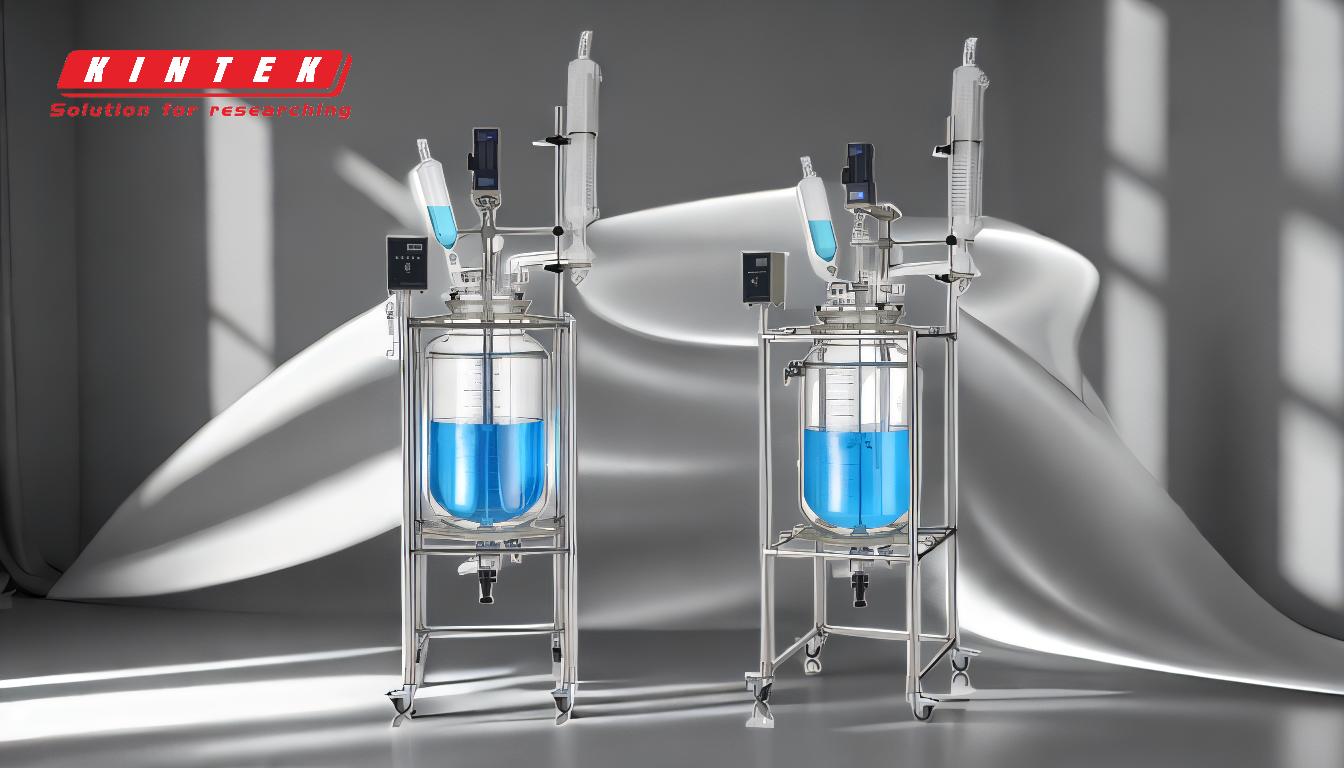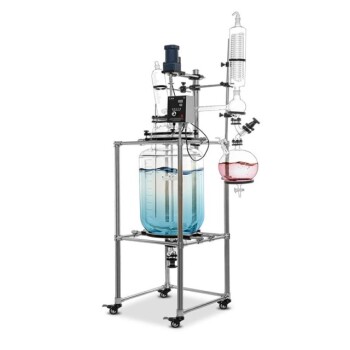Cleaning a glass reactor is a critical process to ensure the accuracy and safety of experiments, prevent contamination, and extend the equipment's lifespan. The process involves using appropriate cleaning agents, adhering to safety protocols, and following systematic steps to remove residues effectively. Alkaline cleaning agents are recommended over acidic ones for glass reactors, as they are more effective and safer for the material. Additionally, maintenance practices, such as avoiding spark-producing activities and ensuring thorough cleaning between runs, are essential to prevent accidents and maintain the reactor's functionality. Below is a detailed explanation of the key points to consider when cleaning a glass reactor.
Key Points Explained:

-
Use Alkaline Cleaning Agents Instead of Acidic Ones
- Alkaline cleaning agents are preferred for glass reactors because they are more effective at breaking down organic residues and contaminants without damaging the glass material.
- Acidic agents can corrode or weaken the glass over time, leading to potential safety hazards and reduced equipment lifespan.
- Alkaline solutions, such as sodium hydroxide (NaOH) or potassium hydroxide (KOH), are commonly used for their cleaning efficacy and compatibility with glass.
-
Thorough Cleaning Between Runs
- Residues from previous experiments can contaminate subsequent reactions, leading to inaccurate results or unsafe conditions.
- A thorough cleaning process ensures that all traces of chemicals, by-products, and contaminants are removed.
- This includes rinsing the reactor with appropriate solvents, using cleaning agents, and inspecting the reactor for any remaining residues.
-
Safety Precautions During Cleaning
- Avoid activities that produce sparks, such as electric welding, gas cutting, or striking metal parts near the reactor. These actions can ignite flammable or explosive materials, posing serious risks.
- Ensure proper ventilation in the cleaning area to prevent the buildup of harmful fumes from cleaning agents.
- Use personal protective equipment (PPE), such as gloves, goggles, and lab coats, to protect against chemical exposure.
-
Systematic Cleaning Process
-
Step 1: Empty the Reactor
Remove any remaining chemicals or materials from the reactor before starting the cleaning process. -
Step 2: Rinse with Water
Rinse the reactor with water to remove loose residues and dilute any remaining chemicals. -
Step 3: Apply Alkaline Cleaning Solution
Fill the reactor with an appropriate alkaline cleaning solution and allow it to sit for a specified period to break down residues. -
Step 4: Scrub and Rinse
Use non-abrasive brushes or sponges to scrub the interior surfaces, followed by thorough rinsing with water to remove the cleaning solution. -
Step 5: Dry and Inspect
Dry the reactor completely to prevent water spots or contamination. Inspect the reactor for any remaining residues or damage.
-
Step 1: Empty the Reactor
-
Regular Maintenance and Inspection
- Regular maintenance ensures the reactor operates accurately and safely. This includes checking for leaks, replacing worn parts, and calibrating temperature and pressure control systems.
- Inspect the glass surfaces for cracks, scratches, or other damage that could compromise the reactor's integrity.
- Proper maintenance not only prolongs the reactor's service life but also ensures the reliability and precision of experimental results.
-
Preventing Contamination
- Contamination can arise from improper cleaning or cross-contamination between experiments.
- Use dedicated cleaning tools and solutions for the reactor to avoid introducing foreign substances.
- Store the reactor in a clean, dry environment when not in use to minimize the risk of contamination.
By following these guidelines, you can ensure that your glass reactor remains in optimal condition, providing accurate and reliable results for your experiments while maintaining a safe working environment.
Summary Table:
| Key Step | Details |
|---|---|
| Use Alkaline Cleaning Agents | Alkaline solutions (e.g., NaOH, KOH) are safer and more effective for glass. |
| Thorough Cleaning Between Runs | Remove all residues to prevent contamination and ensure accurate results. |
| Safety Precautions | Avoid sparks, ensure ventilation, and wear PPE during cleaning. |
| Systematic Cleaning Process | Empty, rinse, apply solution, scrub, rinse, dry, and inspect. |
| Regular Maintenance | Inspect for damage, replace parts, and calibrate systems regularly. |
| Prevent Contamination | Use dedicated tools and store the reactor in a clean, dry environment. |
Ensure your glass reactor stays in top condition—contact our experts today for personalized guidance!











